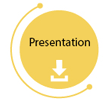-
Sondre Meland
Bio statement :
Country : NO
Contact : sondre.meland@vegvesen.no
Website :
Transport and mobility is fundamental in a modern society. However, roads are pervasive in the landscape and may cause harm to the aquatic environment because of their short- and long-term physical, chemical and biological impacts. Hence, awareness of environmental constraints is important for the National Road Administrations (NRA). For example, building of road increase the amount of impervious and semi-impervious areas and reduces the infiltration capacity of runoff water during storm events. This alteration of the natural hydrologic cycle may cause flooding and physical damages as an uttermost consequence. In addition, traffic, including operating and maintenance of the road network are considered as a major source of diffuse pollution to the aquatic environment. Road runoffs and the discharge of tunnel wash water contain a plethora of various contaminants including e.g. particles, nutrients, de-icing chemicals, metals, herbicides, detergents and persistent organic pollutants.
Mitigating peak runoff volumes as well as pollution reduction are now considered important, and is often mandatory both from a regulatory perspective and for the NRAs. This acceptance, has led to a shift from conventional drainage systems towards more blue-green solutions also known as Sustainable Urban Drainage Systems (SUDS). Engineered detention ponds and wetland are two examples of SUDS commonly applied by many NRAs. If properly designed and operated, these SUDS have proven to mitigate peak runoff volumes and protecting waterbodies from road related pollution. Thus, managing water quantity and quality are the primary functions of the SUDS. Secondary, a range of aquatic organisms unintendedly inhabit the SUDS. Some studies have documented that SUDS such engineered ponds and wetland may play an important role in preserving and even increasing the biodiversity at a local and regional scale. For example, amphibians worldwide are declining in both abundance and species diversity due to many anthropogenic factors such land take, climate change and pollution. However, amphibians such as frogs and newts seem to thrive in this type of environment. Similarly, several species on the Norwegian Red List such as water beetle species also appears present in SUDS. Thus, SUDS along the road network may be important in preserving viable populations of vulnerable aquatic organisms.
The backside of the coin is, however, that these organisms are inevitably exposed to a cocktail of contaminants at concentrations potentially harmful to them. Recent research have shown that e.g. frog larvae readily take up metals during their development followed by physiological effects linked to oxidative stress. In addition, frog larvae exposed to elevated road salt concentrations may cause deformities during their early life stage development. Hence, there is an apparent conflict between the SUDS’ primary function, which include mitigating peak runoff volumes and pollution reduction on one side, and the SUDS’ secondary function being a facilitator for biodiversity on the other side. At its utmost, SUDS may act as ecological sinks and traps. This apparent contradiction will be reviewed and discussed in the present talk, using data from Norway as well as internationally published research.
Freshwater biodiversity; SUDS; Treatment ponds; Road runoff; Road pollution; Ecotoxicity; ecological trap
